Coyote Peterson Kills the Murder Hornet Myth
Animal Expert Coyote Peterson explains why we need not fear our own "slaughter and occupation" by the not-so mythical Murder Hornet
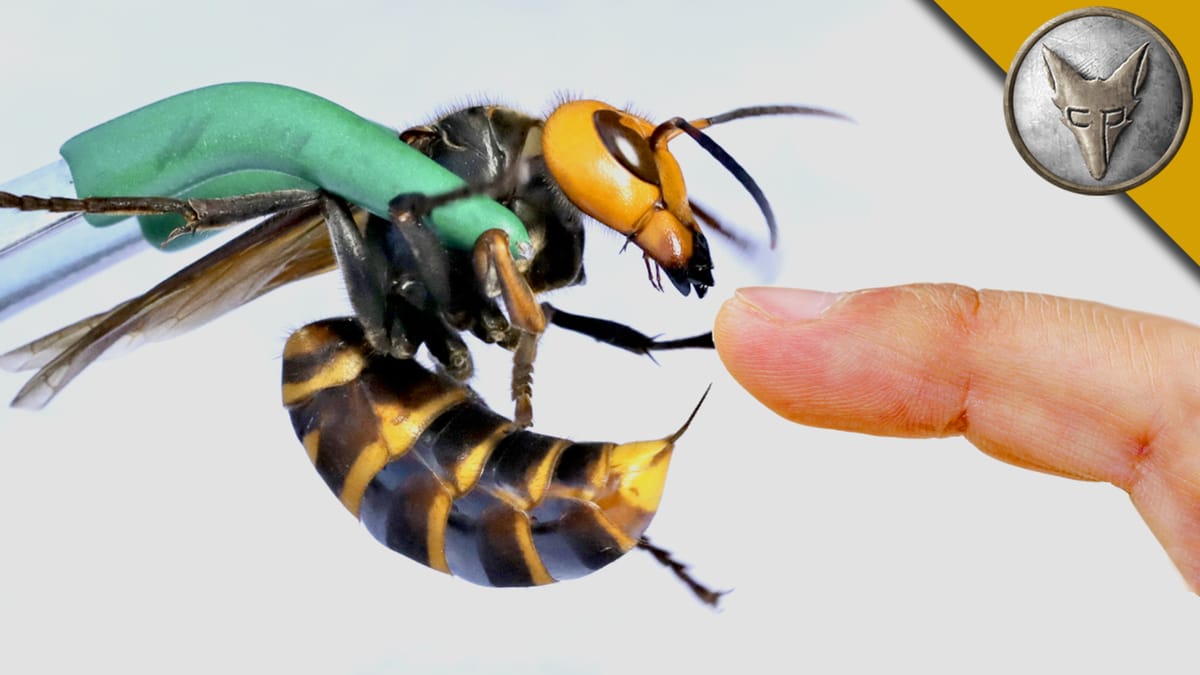
In the throes of our collective battle against COVID-19, a second biblical plague has been set upon us, or has it? A consensus of mainstream media outlets - from The New York Times to Scientific American - has reported this week that the so-called “Murder Hornet” has reached American shores and that its fatal stings will wreak havoc on us this summer. This widespread fear-mongering calls for a fact-finding mission. Thankfully, wildlife expert Coyote Peterson, who survived a sting by the Murder Hornet himself, leads the way. [Learn more about how Coyote turned his passions for animals and filmmaking into the global sensation Brave Wilderness with over 16 million subscribers on YouTube].
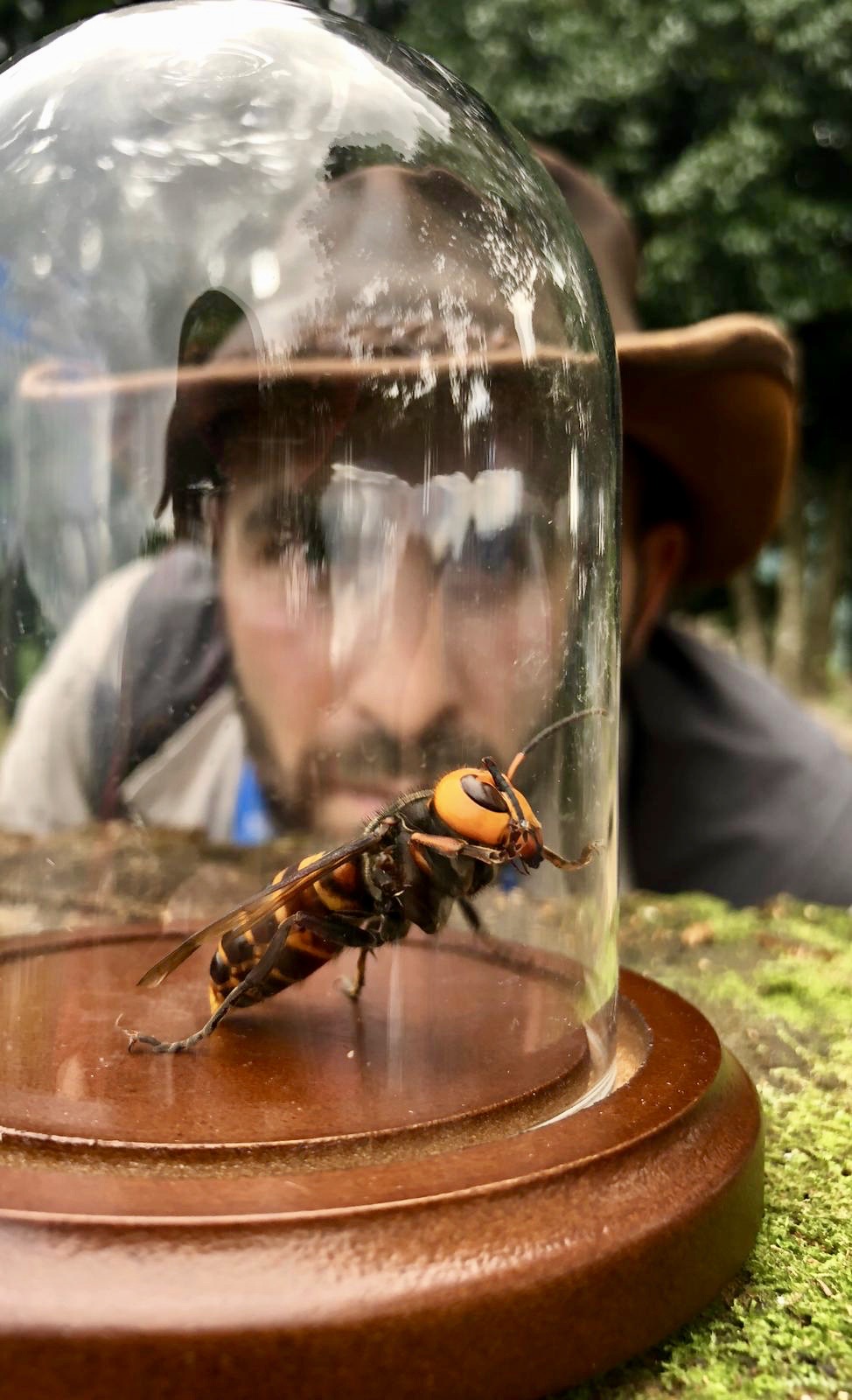
The “Murder Hornet” moniker is a media creation, a hyped-up name for the Asian Giant Hornet (Vespa mandarinia). They are adept at eradicating honeybee hives, killing workers, and eventually the queen on their way to devour the larvae. These vicious mass attacks are known as “slaughter and occupation” behavior and a handful of hornets will kill and decapitate up to 10,000 bees in one hive raid. Their stinger yields a potent neurotoxic venom, one proportional to the insect’s large size. Known for their loud flapping flight, in Japan, they are referred to it as “Great Sparrow Bird” because they are so large that when they fly, they resemble a sparrow.
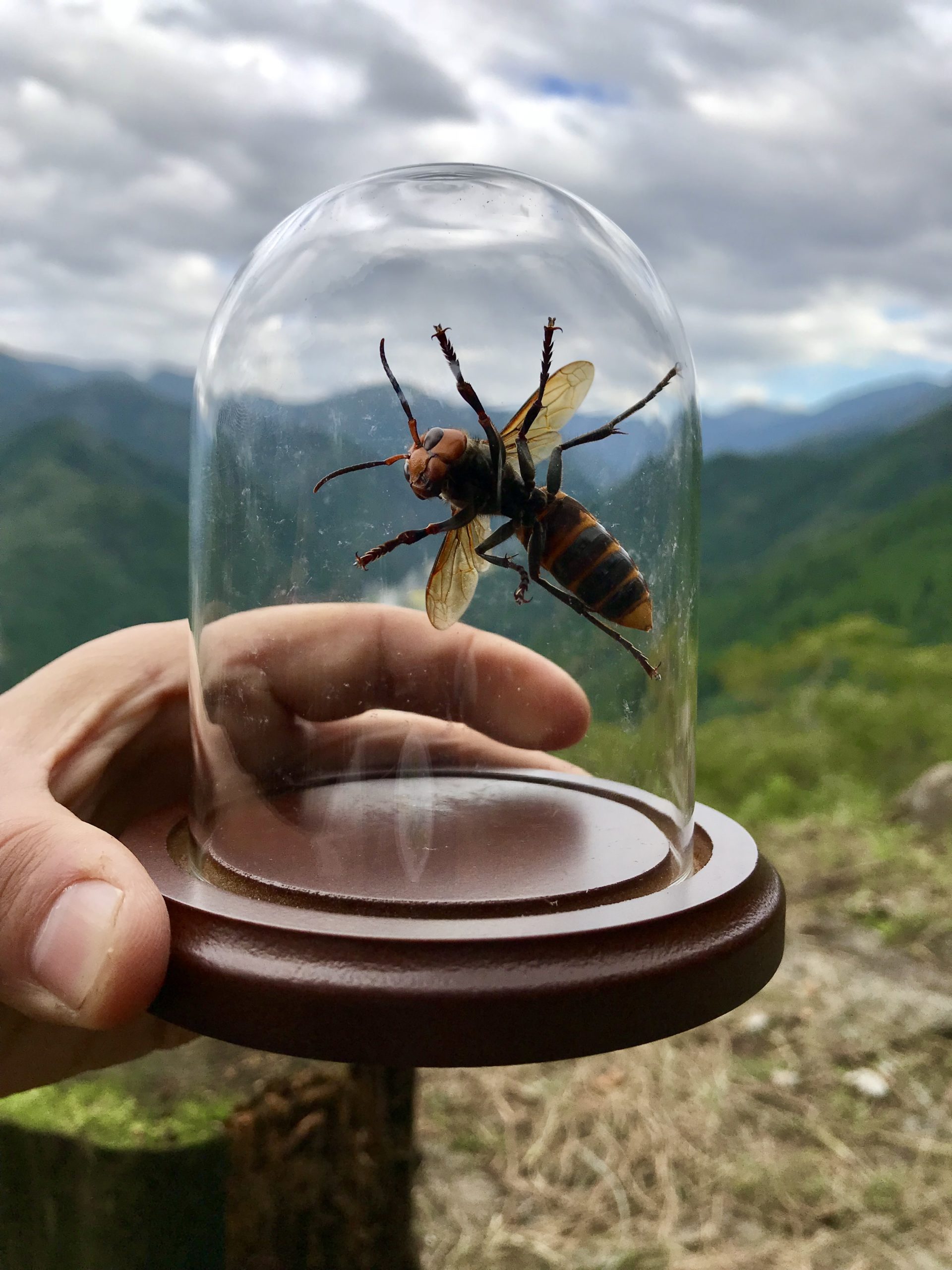
There have been two confirmed sightings over the past year, one in Washington state and one in British Columbia, Canada, marking the first instances of this invasive species in North America. The arrival of the Murder Hornet has brought with it a flood of misinformation. The New York Times reports that Murder Hornets are “a lethal threat to hikers and farmers in the mountains of rural Japan,” that they kill up to 50 people each year, that they are terrorizing the honeybees of Washington state, and that multiple stings can kill a human, whether allergic or not.
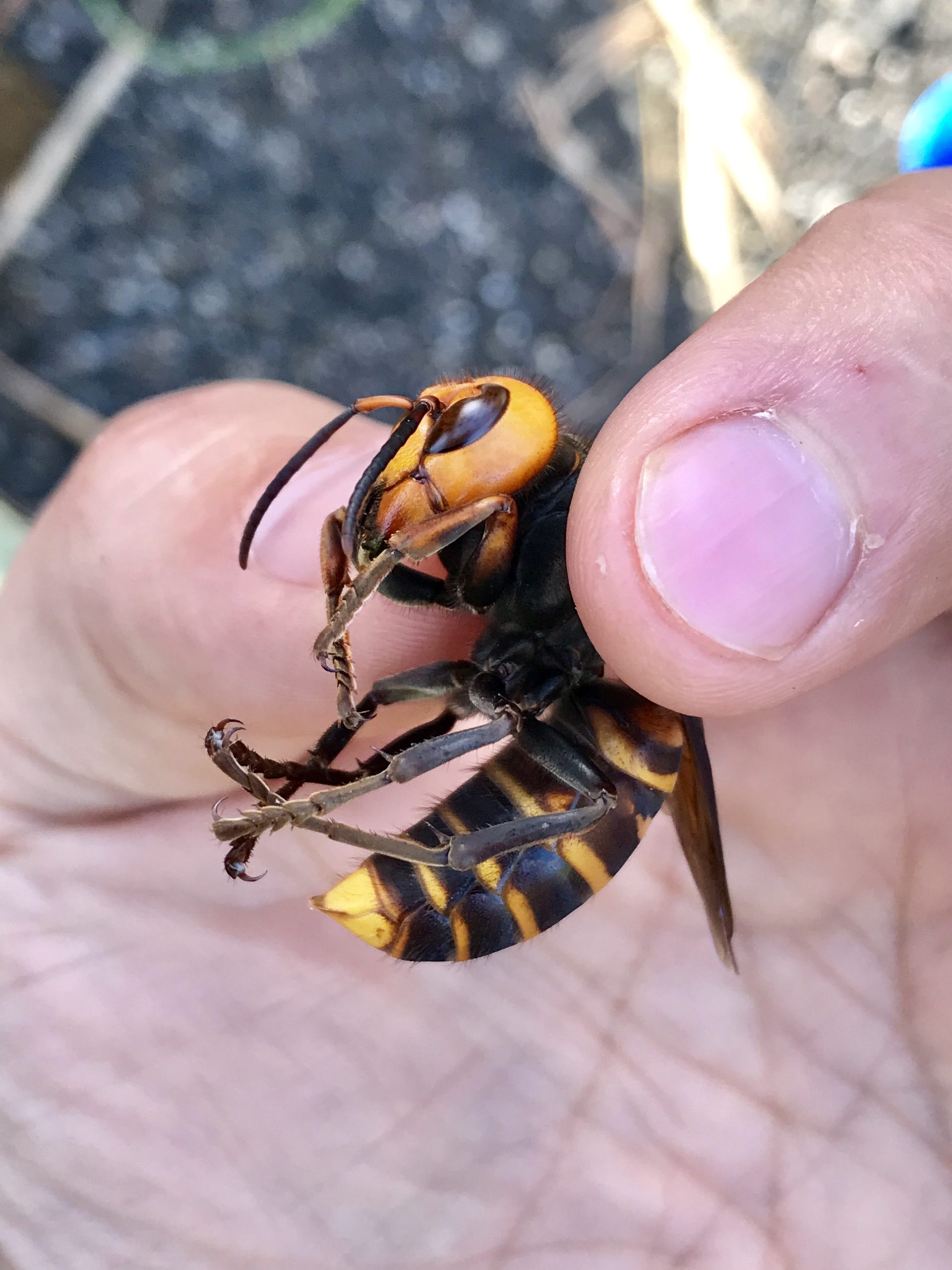
By reading the news, you would feel helpless against the Murder Hornet stinger, which is said to be so big that it can punch right through regular beekeeping suits, and you wouldn’t want to kill one anyway, because the scent would bring about the rest of the hive like a battle cry. There is even a graphic video circulating of a Murder Hornet beating a mouse in a one-on-one battle to the death.
In the name of science and entertainment, Coyote Peterson willingly volunteered to experience the Murder Hornet sting first-hand. His arm swelled to twice its normal size and he admitted that the Murder Hornet packs the second most painful sting in the world, after the Execution Wasp. (Watch Coyote endure the Murder Hornet’s sting).
https://www.youtube.com/watch?v=pFmtmO2cnlg
Luckily, Coyote’s arm returned back to normal so that he could answer our burning questions on the Murder Hornet.
TOJ: Is the media being sensationalistic by creating the name "Murder Hornet" and is it irresponsible for the New York Times to label them as a “lethal threat” in a headline?
Coyote: When it comes to being sensational no one does it better than the media, that said…a full-grown man rolling around on the ground in pain after being stung is also a little sensational, but trust me when I say the sting of this insect is one of the most painful things I have ever experienced. The term “Murder Hornet” is actually a pretty brilliant combination of words and I must give credit where credit is due…who ever coined this term is definitely fantastic at their job because when it comes to “buzzing” up hype, they did a great job. Unfortunately for the Asian Giant Hornet, people are now deathly terrified of them. The truth is that these insects are DEFINITELY NOT a lethal threat to humans and there is virtually no chance they will invade our country and become a resident invasive species. The most important fact to remember in all of this craziness, is that a SINGLE DEAD hornet was found in the Pacific Northwest. I repeat…DEAD, which means that the specimen found IS NOT going to reproduce. There was a colony discovered by entomologists on Vancouver Island in September of 2019 and that nest was destroyed, which means its queen was also likely destroyed. Without a fertile queen and dozens of workers to care for her and the brood of larva she may have had, there is zero chance of the population growing to “invasion/pandemic” numbers. So fear not…your summer will be “murder hornet” free.
The greatest stories are told come hell or high water - Support independent journalism now!
TOJ: Did the name “Murder hornet” originate in Asia or in US media?
Coyote: The term “Murder Hornet” is 100% US media coined, bolstered, and distributed through the headlines to create fear and panic, or maybe to just sell newspapers. In Asian countries, these insects are greatly respected and people have been living alongside them for centuries. They are commonly described as “the great sparrow bee” and while they do attack the hives of European Honey Bees, they very rarely swarm and sting humans. When this happens, it’s almost always as a result of humans accidentally disturbing a nest or intentionally trying to eradicate a nest without the proper clothing or means to do so. The sting is very potent, painful and death usually comes as a secondary allergic reaction to the insects' venom having a negative reaction with an individual’s immune system. In a large percentage of the reported yearly deaths, it is elderly individuals that die and in many cases, the scenario is a remote farmer who is trying to destroy a nest, is attacked, and is not able to seek medical attention quickly enough. Again, Asian countries treat these insects with a great deal of respect, avoid them to the best of their ability, and have found a way to live in harmony with the giant creatures for a very long time.
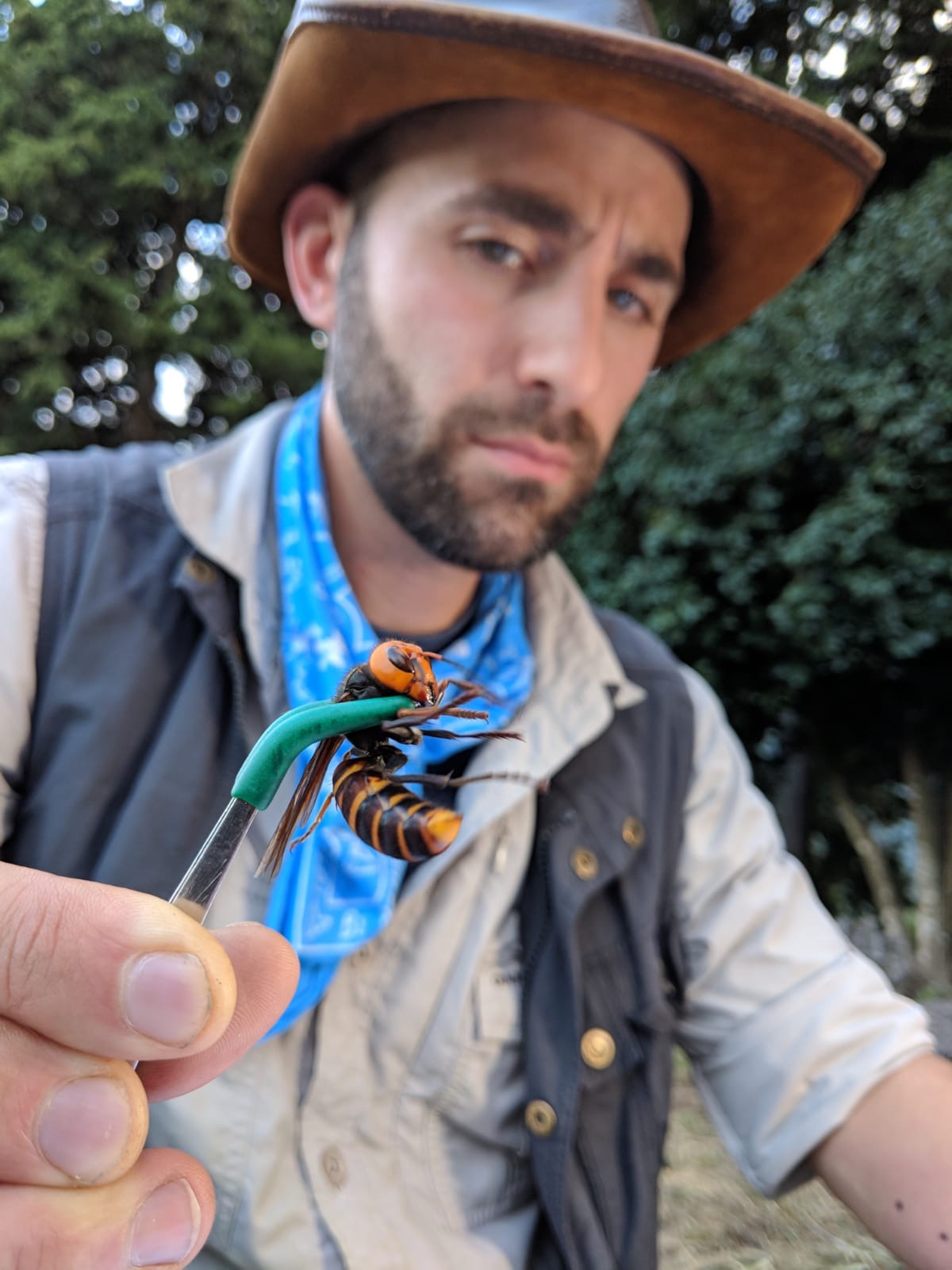
TOJ: The New York Times reported that “its sting has killed dozens of people in Japan in recent years.” Can its sting be considered fatal to humans?
Coyote: YES the sting can be considered fatal but again that is usually due to a secondary allergic reaction to the venom. These hornets have a very potent neurotoxic venom and in some cases necrotic, or cell destructive properties, have been reported as an after effect from stings. However, a single or even multiple stings taken by a healthy adult are going to be very painful… but not likely lethal.
TOJ: What does the sighting of an Asian hornet species in the Pacific Northwest tell you about how other parts of the country will be affected? Is it highly likely that the species will migrate to other parts of the country?
Coyote: The finding of a single dead hornet, which is all that I have personally seen, tells me exactly that. A dead hornet was found in the Pacific Northwest. This does not mean there is an outbreak and in-fact an outbreak is very unlikely. For hornets to successfully reproduce and spread you need a fertile queen and several healthy drones (males) and workers (females) to build, take care of and establish a colony that in turn produces healthy larva that can hatch into more hornets. The single nest found on Vancouver Island in 2019 was destroyed and along with it went the larva, likely most of the drones and almost certainly the queen. So no it is not likely or honestly even possible that these hornets can spread to other parts of the country. As a safety precaution, entomologists in the Pac Northwest are working diligently to make sure no other hornets or their colonies are present in the area. These experts know what they are looking for, are incredibly skilled at their jobs, and will have this situation well under control if there happen to be any other nests discovered.
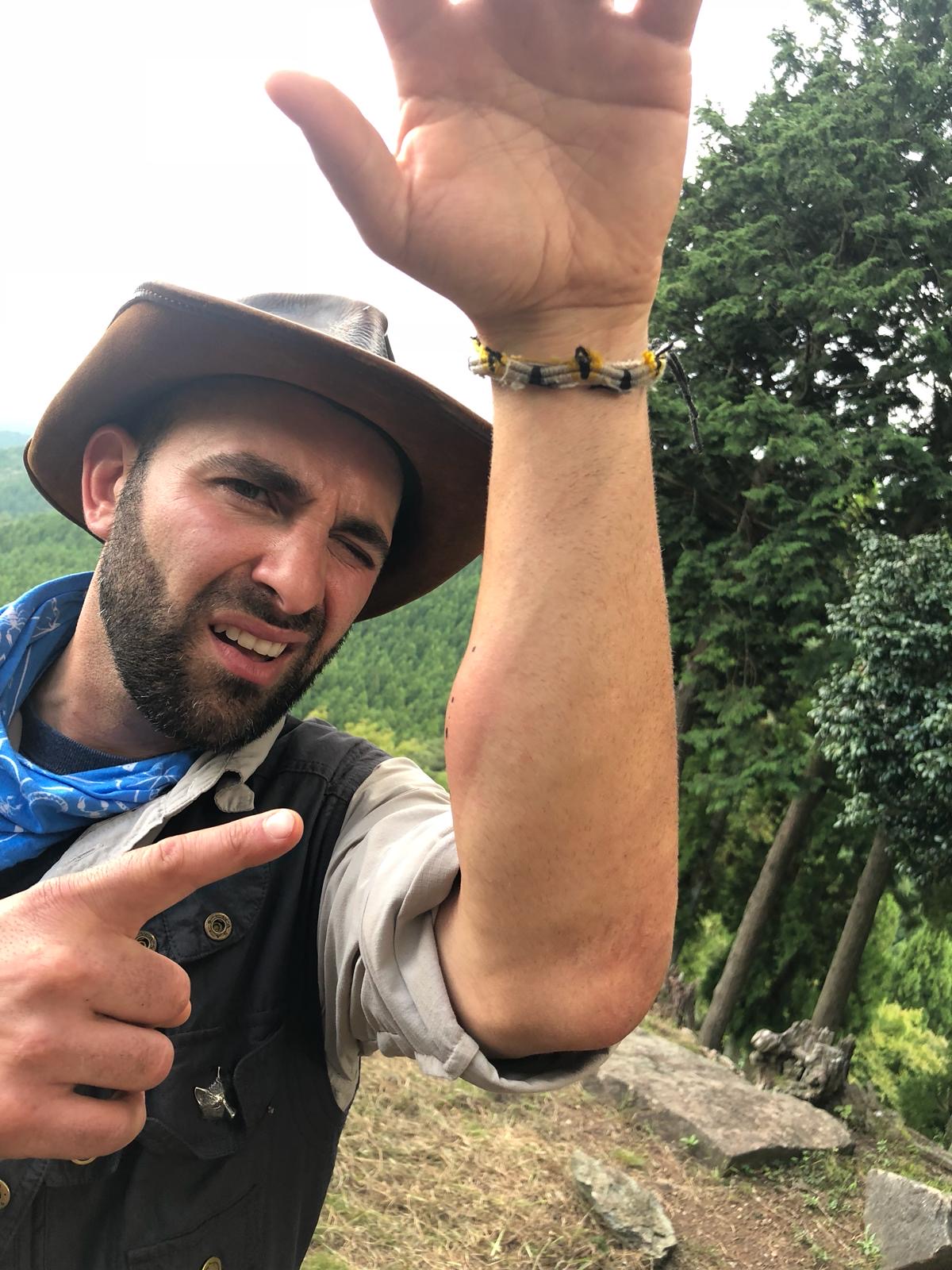
TOJ: You have come face to face with many insects, even allowing yourself to be stung by some of the most painful stingers on the planet. How do Asian Giant Hornets, or Murder Hornets, rank in terms of size and sting potency?
Coyote: I was stung by a subspecies of Asian Giant Hornet known as the Japanese Giant Hornet, one of the biggest hornets in the world. The sting was insanely painful and hails as the second most painful sting I have ever taken. It ranks as a 4 on the Insect Sting Pain Index, a scale created by the Godfather of stings, entomologist Justin Schmidt. According to my experiences, the most painful sting in the world belongs to the Executioner Wasp, a vespid paper wasp species found in Central and South America. The difference is venom potency. The X-Wasp has a more destructive venom as compared to the Giant Hornet, it also has a more aerodynamic design and can fly faster than the hornet, which makes running away from a swarm just a hair more difficult. Trust me, you never want to experience a sting from either. Or a bullet ant, tarantula hawk, or cow killer (velvet ant) as they also rank high up on the ISPI. [Listen to The Outdoor Journal Podcast featuring Coyote Peterson on Apple Podcasts]
TOJ: If the Asian Green Hornet does not have a migratory pattern to fly from Asia to the US in swarms, how did it get here, and is it possible that it will breed to become a nuisance, as we have seen with the Africanized Honey Bee?
Coyote: The hornets likely arrived on Vancouver Island via cargo ship. It is likely the nest was dormant and in some type of plant or agriculture-oriented product that came over from Asia or Japan. Hornets are capable of slowing down their bodies and entering what’s known as a torpor state, almost like hibernation in mammals. This is why no one on the ship encountered them or was swarmed. I would say this is a “theory” as no one knows specifically how they got here, however, I can say with 100% certainty that it is impossible for a swarm of hornets to fly across the ocean. They are way too big in body structure and have a very limited flight time based on body size and weight, as compared to something like a monarch butterfly or even bees. Remember European Honey Bess and Africanized Honey Bees, aka “killer bees” are both technically invasive here in the United States, neither of them magically flew here either, they were released or farmed. But that is a much larger conversation for another day! So NO, there will not be nuisance swarms of giant hornets buzzing around at birthday parties and picnics this summer.

TOJ: What did the immediate sting feel like and how did you manage the suffering over the course of that day? At any point did you fear that you had done irreparable damage to your arm?
Coyote: The immediate impact of the sting felt like I called Iron Mike Tyson a "little pigeon sissy" in a dark alley where no one could see him haul off and wallop me full swing in the lower jaw. In short, it hit me like nothing I’ve ever experienced and I literally saw a flash of white and almost passed out. The burning of the venom in my arm was like someone shoved a hot ember cooked poker into my forearm and kept pressing harder and harder. The swelling began within seconds and I barely remember finishing the episode. I was in considerable pain for more than seven hours and by considerable, I mean a pain that most humans would probably not be able to stand. A few tall Japanese beers I hoped would help the pain and agony, alas, they did not, haha. I did take some Benadryl because of the swelling, that had zero effect as my hand and forearm ballooned to nearly twice their normal size. A ‘sensitive to touch’ pain lasted for nearly 36 hours and the swelling persisted for roughly the same duration. Fortunately my body fought off any necrotic aspects, so I experienced no cellular damage externally but boy was it a rough couple of days after the sting for ole’ Coyote. I felt like the cartoon Coyote character after a full episode trying to catch the Road Runner, defeated, broken, swollen and waving the white flag. I wasn’t necessarily ever afraid during the process, after you are stung if no allergic reaction kicks off within the first five minutes, you are usually in the clear. Meaning you are not heading toward anaphylactic shock – this is the WORST thing that can happen - and YES we always have an epi-pen on location with us just in case my body takes a turn for the worse.
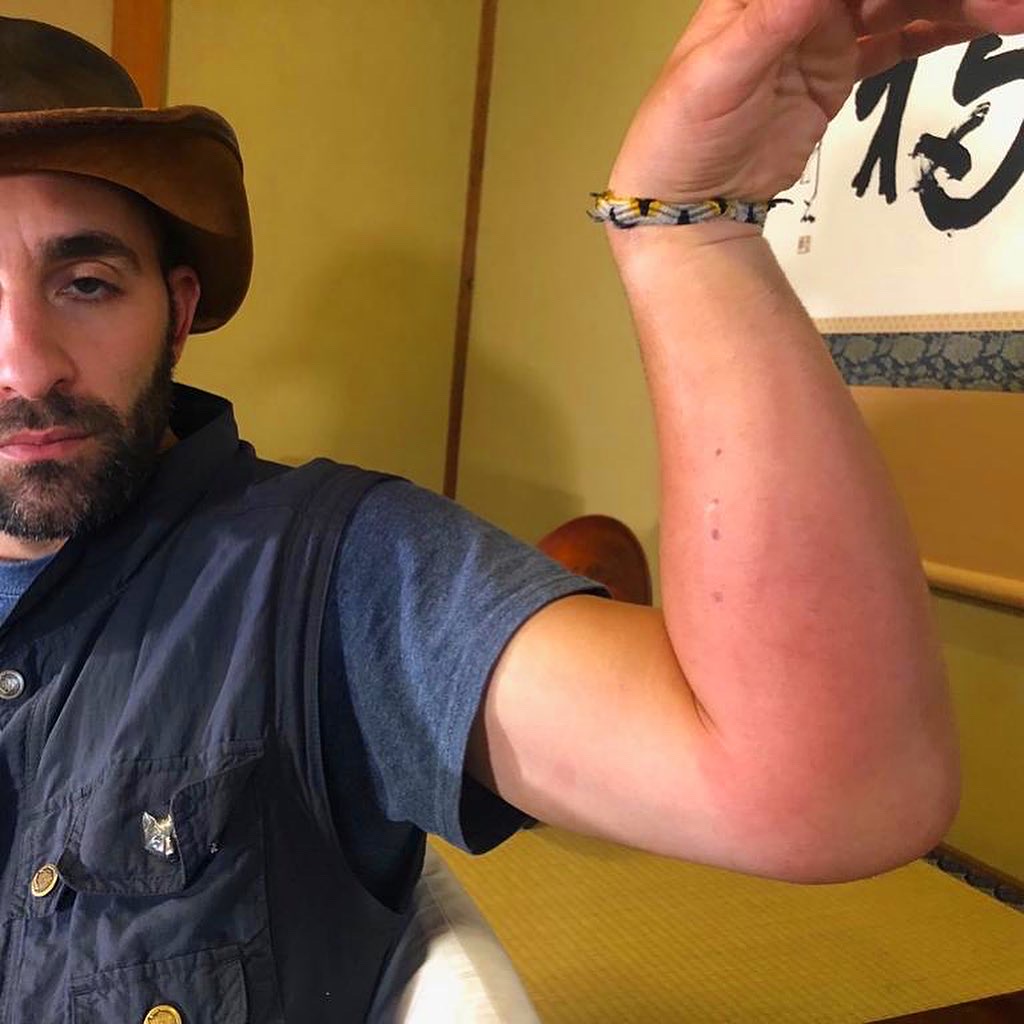
TOJ: What would happen if a child was stung by one, or perhaps multiple hornets at once?
Coyote: If a child were stung…they would cry, FOR SURE. However, unless stung on the face or neck/throat, they would almost certainly survive. If a child were swarmed and stung 10-30 times, yes death could be a very real threat. However, this can be said for any stinging insect including bees, common hornets and wasps. So always keep an eye on your young ones and encourage them to steer clear of paper wasp nests. As for kids running into “murder hornets” that is unlikely to happen.
TOJ: What should you do if you spot them or hear them?
Coyote: Hearing them is tough, you probably wouldn’t know what you were hearing unless you were an entomologist. If you SEE one, the best thing to do is take a picture and send it to your local fish and wildlife department, they will then turn it over to a local university with an entomology department and it will be properly identified. DO NOT try to catch or kill it…that can result in the animal feeling provoked and can lead to an attack/sting. Remember, hornets don’t lose their stingers like honey bees and they can sting repetitively!
TOJ: What should you do if you find yourself under attack by a swarm?
Coyote: If you are swarmed by any insects the best thing to do is RUN as fast as you can and try to get inside shelter like a house or car. Most nests and the soldiers that defend it have a limit to how far they will follow an attacker, so the further you get away from the source of the insects the better. Getting inside, while some might come in with you, gives you the best chance to separate yourself from the swarming insects. DO NOT jump in a pool or a pond/lake the attacking swarm will wait for you above the surface and you can’t hold your breath that long!
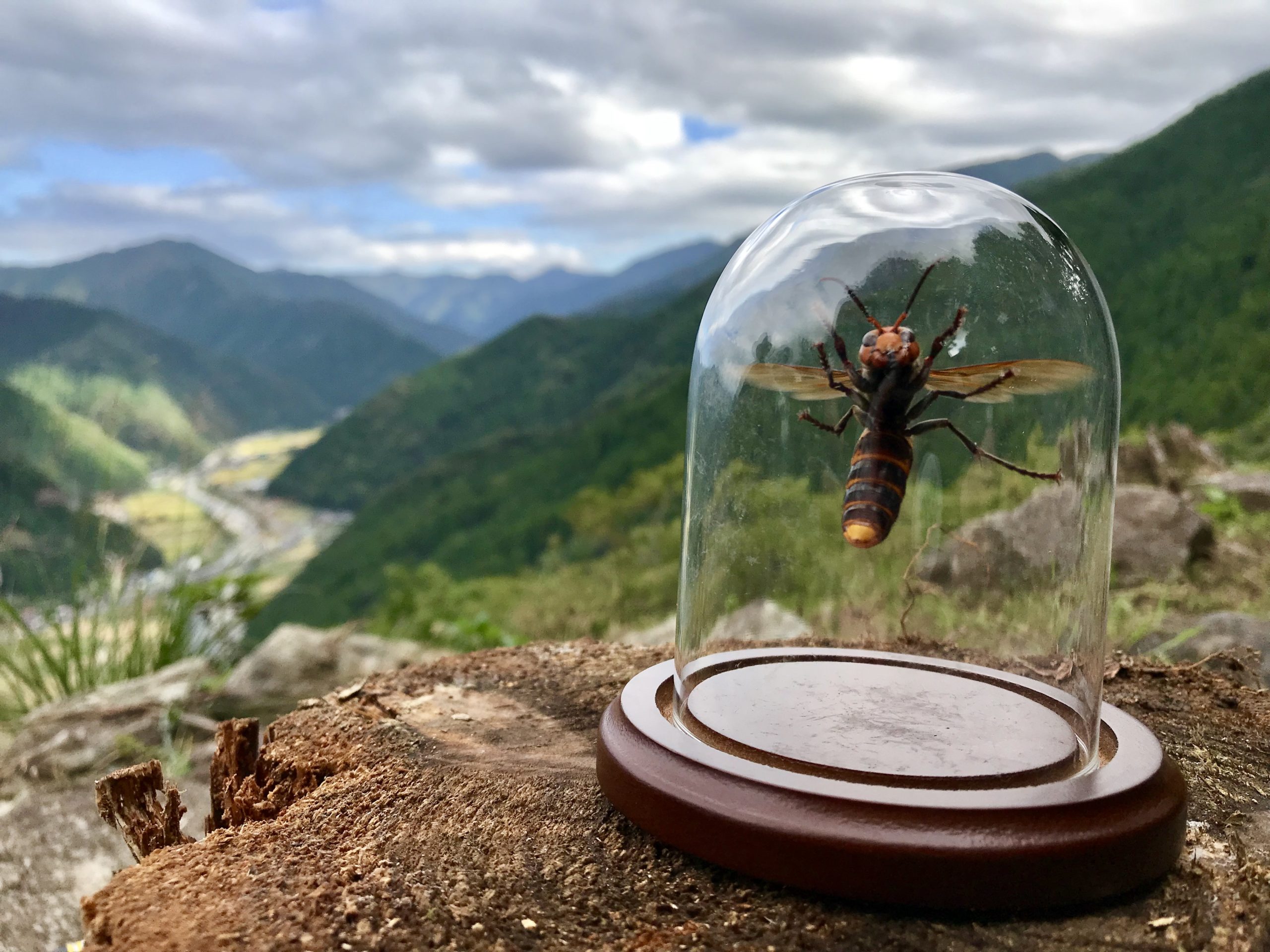
TOJ: The Asian honeybee defense against giant hornets sounds like something a science fiction writer made up. Is this the most impressive evolutionary behavioral adaptation you’ve learned about?
Coyote: It certainly is impressive but many species have learned to adapt specific defenses toward individual predators that can have catastrophic results on their population. It is a trait that the Asian Honey Bees have developed over centuries of interaction with these hornets. The biggest threat that European Honey Bees have, whether in Japan or here in the US, is that they have not evolved this defense, which is why the Giant Hornets can easily take out a colony in less than one hour. For scale, that is 5-15 hornets killing and decapitating up to 10,000 bees in one massacre.
TOJ: What good can come from citizens helping out with species identification and tracking?
Coyote: Identifying invasive species in your area is a huge help to wildlife warriors that are protecting the native animals and plants. The US is overrun with invaders, Florida specifically suffers from the invasion of pythons, iguanas, anoles, lionfish, teagu, cane toads, and countless others. Do you want to know what the biggest invader/problem is in most ecosystems…Ferrel cats! Believe it or not, cats decimate more bird, mammal, reptile, and amphibian species than almost any other animal on the planet. For the record, I’m a dog person.

TOJ: Is the chance of being stung ANOTHER thing that people should be worried about in this crazy 2020?
Coyote: NO absolutely not. In fact, I am so confident that no one in the US is going to be stung by a Giant Hornet that if they do, I will personally fly out to meet them and provide a badge of bravery for taking a Giant Hornet sting like Coyote Peterson. Everyone should enjoy their summers, practice safe social distancing, and eat plenty of hot dogs and hamburgers and cookouts, there won’t be any Giant Hornets showing up to the party!
TOJ: There is a graphic video of a Murder Hornet killing a mouse. If just one could do that, is it possible that people’s pets could be in danger from a swarm?
Coyote: That video is 100% staged. Whoever produced it took a mouse and a hornet and put them in a controlled environment with cameras and lights so that they could make a video to show the results of that hornets venom on a small mammal. Can a Giant Hornet kill a mouse, yeah for sure. But hornets don’t eat mice, ever or pets. So NO you do not need to worry that your pet is going to get attacked either. Pets do occasionally stumble upon wasp or hornet nests, they might even take several stings but most animals are incredibly resilient toward insect venoms and almost always recover. Again, unless an allergic reaction occurs or the animal is stung so many time near its face and throat that swelling cause the airway to close off and suffocation becomes the means of death. This still is very unlikely! You, your kids, your best furry friend, and everyone that reads this article will be safe and sound this summer amongst the craze of “Murder Hornets” or as we should probably call them at this point “Hype Hornets!”
Follow Coyote and his crew at Brave Wilderness channel on YouTube and on Facebook, Twitter, and Instagram (@CoyotePeterson).
Photos courtesy of Coyote Peterson.





Comments ()